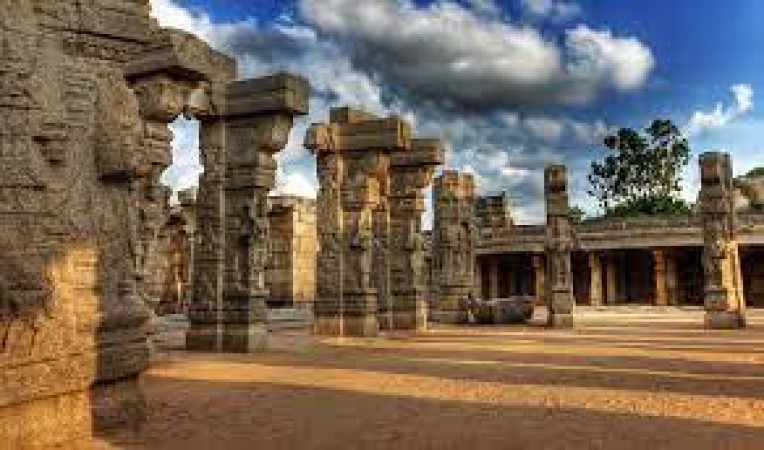
Lepakshi Temple, located in Andhra Pradesh, India, is renowned for its awe-inspiring architecture and extraordinary craftsmanship. Among its many wonders, the Hanging Pillar stands out as an engineering marvel that has puzzled visitors and experts alike for centuries. This article delves into the mysteries and scientific explanations behind the Floating Pillar, shedding light on the incredible feat achieved by ancient builders.
Historical Background of Lepakshi Temple
The history of Lepakshi Temple dates back to the 16th century when it was constructed during the reign of the Vijayanagara Empire. The temple is dedicated to Lord Shiva and boasts a rich cultural heritage, adorned with intricate carvings, murals, and sculptures that depict various mythological tales.
The Hanging Pillar Mystery
Description of the Floating Pillar
The Hanging Pillar is one of the 70 pillars supporting the main structure of the temple's Natya Mandapam (Dance Hall). What makes this pillar unique is its curious characteristic of not touching the ground fully. There is a visible gap between the base of the pillar and the floor, leaving it suspended in the air.
Theories and Legends Surrounding the Phenomenon
Over the centuries, several theories and legends have emerged to explain the Floating Pillar. Some locals believe that the pillar's construction was interrupted by the British, who were awestruck by its beauty and attempted to move it. Others believe that the pillar's suspension is due to divine intervention, linking it to mythological tales.
Engineering Marvel of the Hanging Pillar
Architectural Design and Material Used
The construction of the Lepakshi Temple showcases exemplary architectural brilliance. The Hanging Pillar's design follows the principles of balance and symmetry. The craftsmen used locally available sandstone to create this masterpiece, which showcases the artistic prowess of the era.
Construction Techniques and Expertise of Ancient Builders
The ancient builders displayed an unparalleled understanding of engineering and construction techniques. The precision with which the pillar was carved and balanced is a testament to their expertise.
Scientific Explanations
Acoustic Levitation Theory
One popular scientific theory suggests that the Hanging Pillar's suspension is a result of acoustic levitation. According to this hypothesis, the builders may have used sound waves to create an anti-gravity effect, allowing the pillar to levitate.
Interlocking Mechanisms and Balance
Another explanation revolves around the concept of interlocking mechanisms. It is believed that the pillar's design and the way it fits into its base ensure that it remains stable without requiring full contact with the ground.
Impact of Earthquake Resistance
Some researchers propose that the pillar's design incorporates earthquake-resistant features, enabling it to withstand seismic activities without collapsing.
Preservation and Conservation Efforts
To protect the heritage and prevent any damage to the temple and its marvels, preservation and conservation efforts are undertaken by the government and various cultural organizations.
Visitor Experience and Tourism
The Floating Pillar has become a major attraction for tourists, scholars, and curious minds from across the globe. Visitors flock to the Lepakshi Temple to witness this astonishing phenomenon firsthand and marvel at the architectural brilliance of the bygone era.
The Cultural Significance of Lepakshi Temple
Beyond its engineering marvels, Lepakshi Temple holds immense cultural and religious significance. It serves as a reminder of India's rich historical heritage and the artistic achievements of ancient civilizations. The Floating Pillar of Lepakshi Temple continues to be an enigma that captures the imagination of all who visit. Its seamless blend of architectural prowess and scientific intrigue makes it a symbol of India's glorious past and a testament to the incredible feats accomplished by ancient engineers. The Hanging Pillar remains an enduring mystery, inviting us to explore and appreciate the wonders of our cultural heritage.
PM Modi, President honor Kargil bravehearts on Vijay Diwas
India's Defense Minister Declares Bold Stand: Ready to Cross LoC to Safeguard Honor and Sovereignty